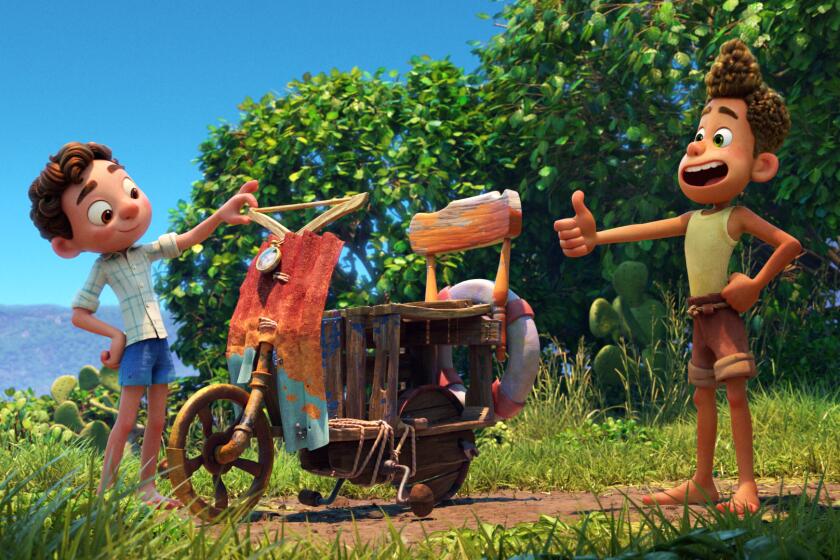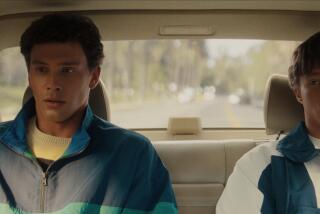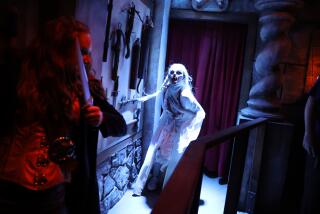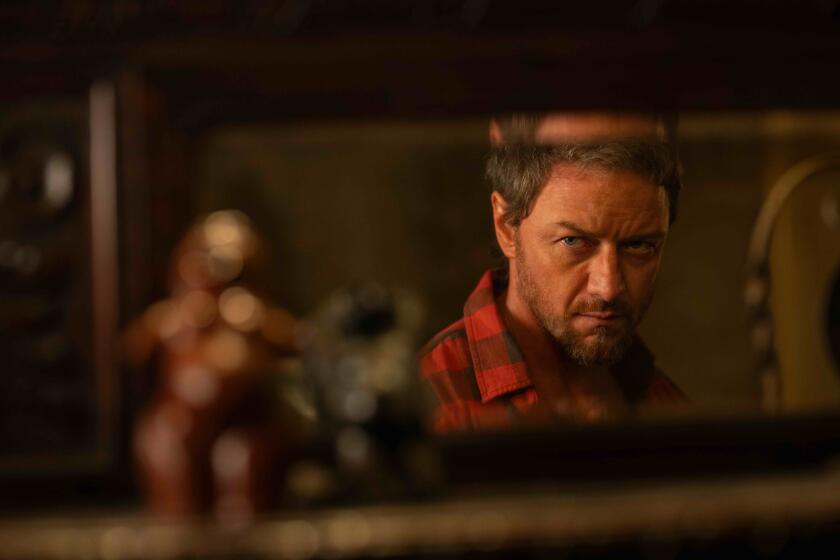‘Luca’s’ sea monsters can turn into humans. Here’s how the Pixar filmmakers did it
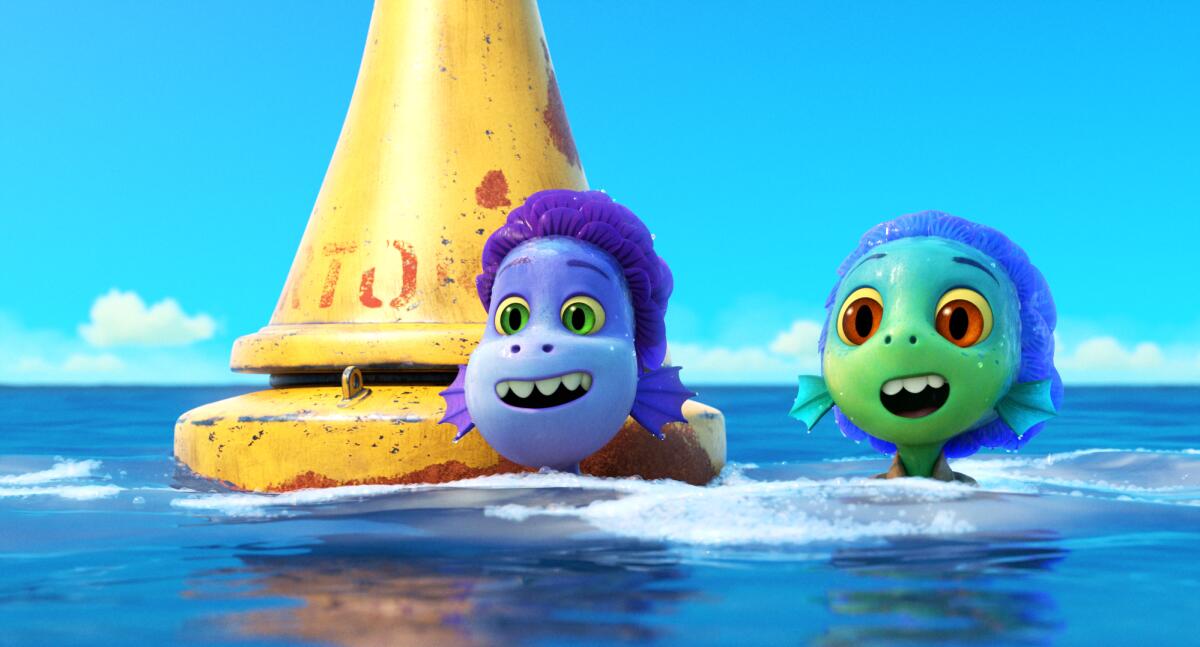
For director and storyboard artist Enrico Casarosa, part of the fun of developing ideas at Pixar, where he has worked since 2012, is figuring out how to blend the personal with the fantastical.
Like his Oscar-nominated short film “La Luna,” Casarosa’s debut feature, “Luca,” draws on his childhood in Genoa, a port city on the Italian Riviera, as well as the director’s memories of his childhood best friend. The more whimsical element of the film — sea monsters — grew from Casarosa’s fascination with changelings.
“There’s so many changelings in folklore,” he said during a recent video call. “I love Japanese folklore — there’s the foxes that can [transform to] look like humans, and the tanuki. There’s the selkies in Ireland. In Italy,” he continued, “there’s an old legend of Colapesce, about a boy that stays so much in the water, he becomes half fish.”
Defter and more surefooted than Pixar’s Oscar-winning “Soul,” Enrico Casarosa’s directing debut opens at the El Capitan and streams on Disney+.
In “Luca,” the sea monsters live in their own underwater farming community, hidden away from humans. To them, the creatures above the surface, with their boats and nets, are the (land) monsters. But 13-year-old Luca (Jacob Tremblay) is still very curious. He befriends Alberto (Jack Dylan Grazer), a fellow sea monster who pushes him out of the water for the first time. Above the surface (and without the drama of an Ursulan bargain) the two change until they look just like humans; they eventually venture into the nearby town of Portorosso.
Sea monsters that can transform into humans are perfect for a coming-of-age story. On top of the literal physical changes that come with adolescence, there are plenty of feelings around identity and keeping personal secrets — and, of course, the often overwhelming desire to just fit in.
“I thought, ‘Oh, what an interesting possibility here in conveying some secret that we have and this oddness that we feel as kids,’” said Casarosa. “During those difficult years of finding yourself, you do feel ‘Whose body is this?’ even.”
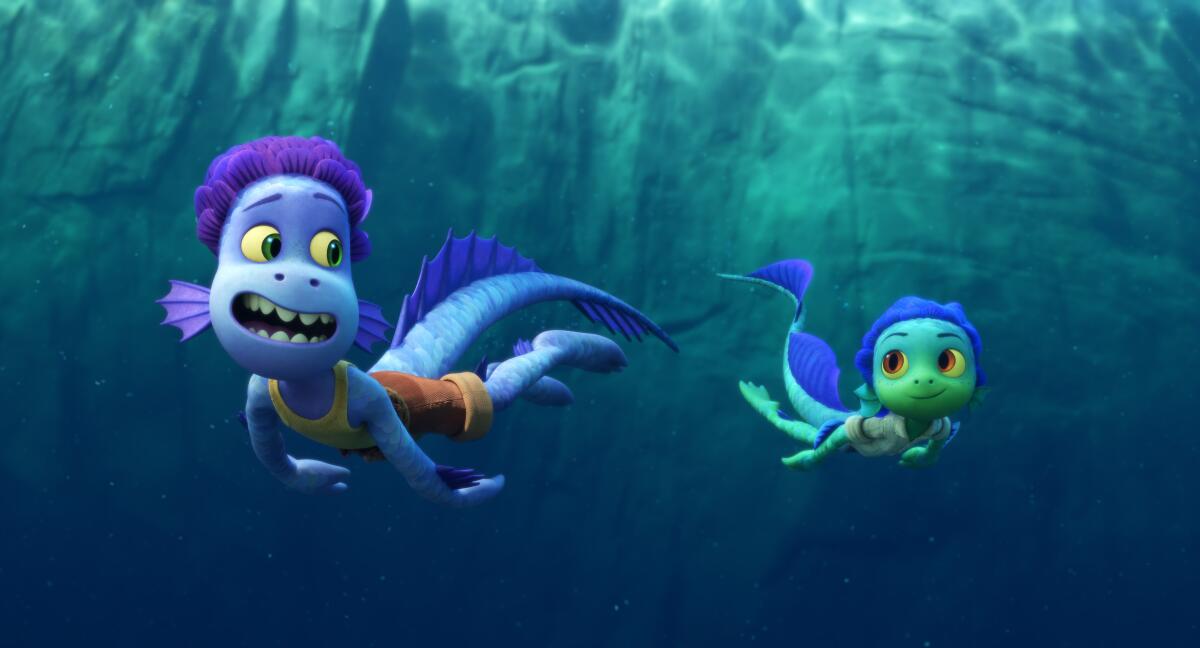
In developing the look of these sea creatures, character art director Deanna Marsigliese started at the beginning, with Carta Marina, Olaus Magnus’ famous 16th century map of Northern Europe.
There are “lots of medieval depictions of sea monsters in folklore, but you can’t just stop there,” said Marsigliese. “We wanted to design something unique that maybe this audience has never seen before. In order to do that, you need to look outside of the obvious.”
These non-obvious references include Japanese block prints, scientific illustrations and a lot of folk art from around the world. But even more important than developing a unique look, Marsigliese said, was staying true to the fact that, no matter how fierce and dangerous they might seem, sea monsters have always been considered decorative.
“When we went to Italy, we would see [sea monsters] mosaicked into the floor,” she said. “We’d see them carved into fountains — always as a decorative element. So it was really important to me that they stay beautiful. That’s why we have all of the irregular scaling and the curlicues in the tails and the iridescence.”
Story and art always work together in films, especially in animated films — as much as the art and design is informed by the story, the story is informed by the art. And this plays out in the environment as well as the characters.
“Luca,” with its vibrant blues and greens, is inspired by the deep waters off the Ligurian coast. But the blurred beauty of the background also conveys the limits of Luca’s undersea world, foreshadowing his journey to see more of the larger world.
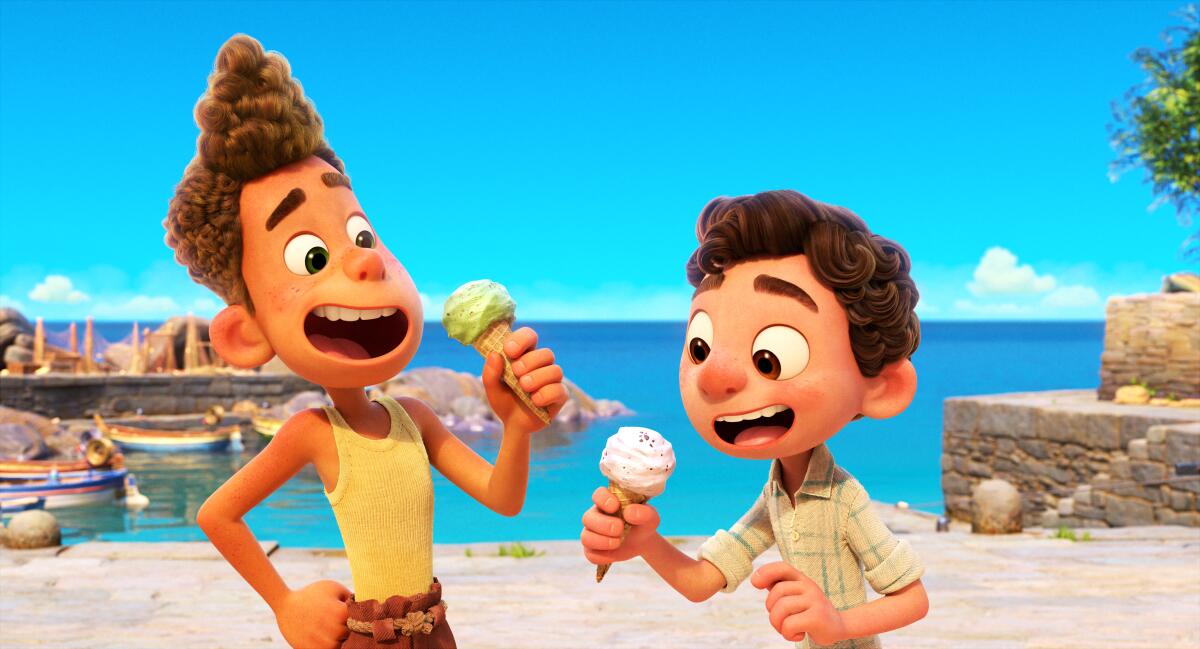
Character designs also take cues from the story: Luca’s large eyes and smoother fins reflect his gentleness and curiosity; his grandmother’s long, curly tail shows how the sea monsters age, growing to look more like the iconic images in the antique maps.
“All of these story notes and character notes help us to better choose shapes and color and line, because whoever these characters are, our job is to find the visual representations,” said Marsigliese. “Before any of the dialogue is even spoken, your hope, as a character designer, is that the audience is going to see that character and already understand who they’re looking at.”
Of course, the sea monster characters like Luca and Alberto have two forms — sea monster and human — which, in terms of 3DCG, is the same as having two separate characters. The transformation, which Casarosa describes as “a sleight of hand,” was tricky.
Pixar’s “Soul” takes us to “The Great Before,” where unborn souls prepare for life on Earth. The filmmakers discuss the unique visual design.
“One had to turn into the other without it being creepy,” said Marsigliese. “Because we had scales, we had retracting tails, we had a finger that splits into two — done the wrong way, we move away from cuteness and lyricism. So we had to work really hard to make sure we maintained that really playful, charming quality.”
Casarosa explained that the goal was to craft a transformation that felt more like an element of natural adaptation than instantaneous magic.
“Almost like they learned to hide in plain sight over the centuries,” he said. “And we knew that we wanted the water to really be the factor that would make it happen in both directions.”
In figuring out what to show and how to show it, the team studied hue- and shape-changing cephalopods like squid and octopus, watching closeups of their chromatophores, or pigment-containing cells, to see natural camouflage in action. Ultimately they landed on a process that involved the movement of the sea monsters’ scales disappearing/reappearing and a pattern for the change of color.
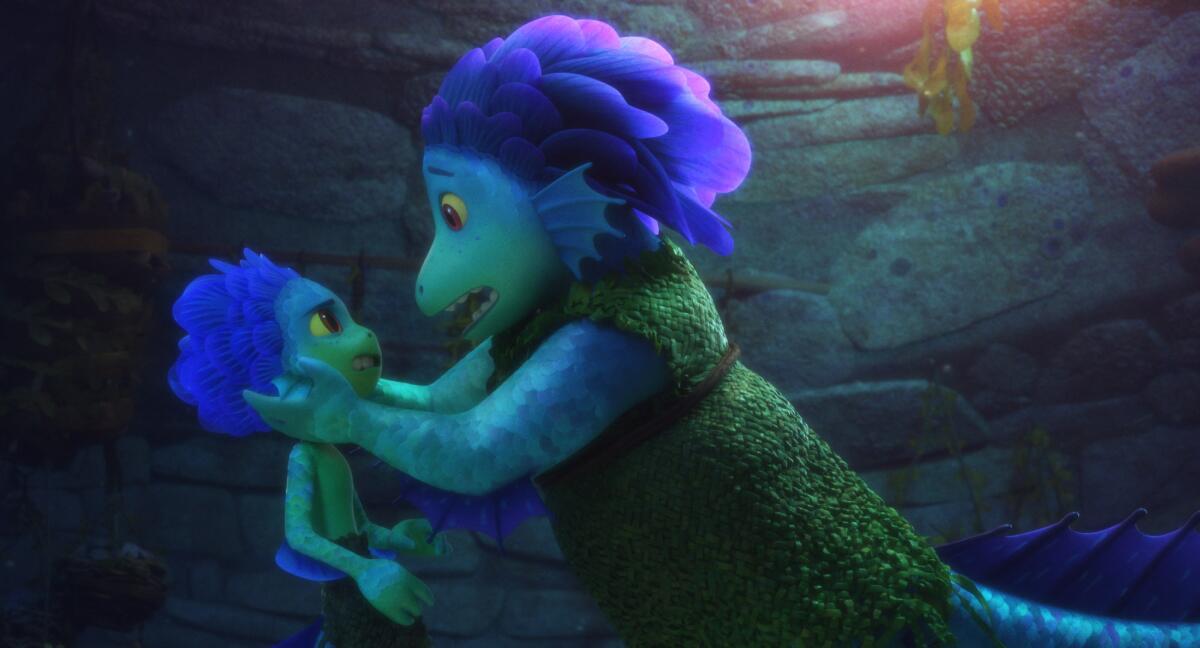
“It wasn’t as interesting when it was only scales disappearing,” said Casarosa of the two-part approach. “This gave us this interesting sense of color disappearing inside the skin.”
Another consideration was the flexibility the transformation process needed to serve the story. On certain occasions, the transformation was the emotional showcase and something to lean into. Other times, the transformations would need to happen quicker.
It’s a bit nerve-racking because “you’re really trying to find a way to do something that’s beautiful, but also something that people should not think about,” said Casarosa. Since everything comes together over time, piece by piece, “The difficulty is trusting the process, trusting that you’re going to get there, when all the bells and whistles are not there yet.”
But there is also beauty in the process.
Luca’s Uncle Ugo, for example, was a character Casarosa initially believed would be difficult to pull off because he is transparent. A happy accident helped bring his final look together.
“I remember one render went off a little wrong, and his eyes were glowing by mistake,” said Casarosa. “He was always supposed to have a little anglerfish light, but we saw this weird broken render and I thought it was really cool that his eyes are glowing. So we went for it and actually changed the character to have glowy eyes. I love that these little weird accidents sometimes happen.”
More to Read
Only good movies
Get the Indie Focus newsletter, Mark Olsen's weekly guide to the world of cinema.
You may occasionally receive promotional content from the Los Angeles Times.
